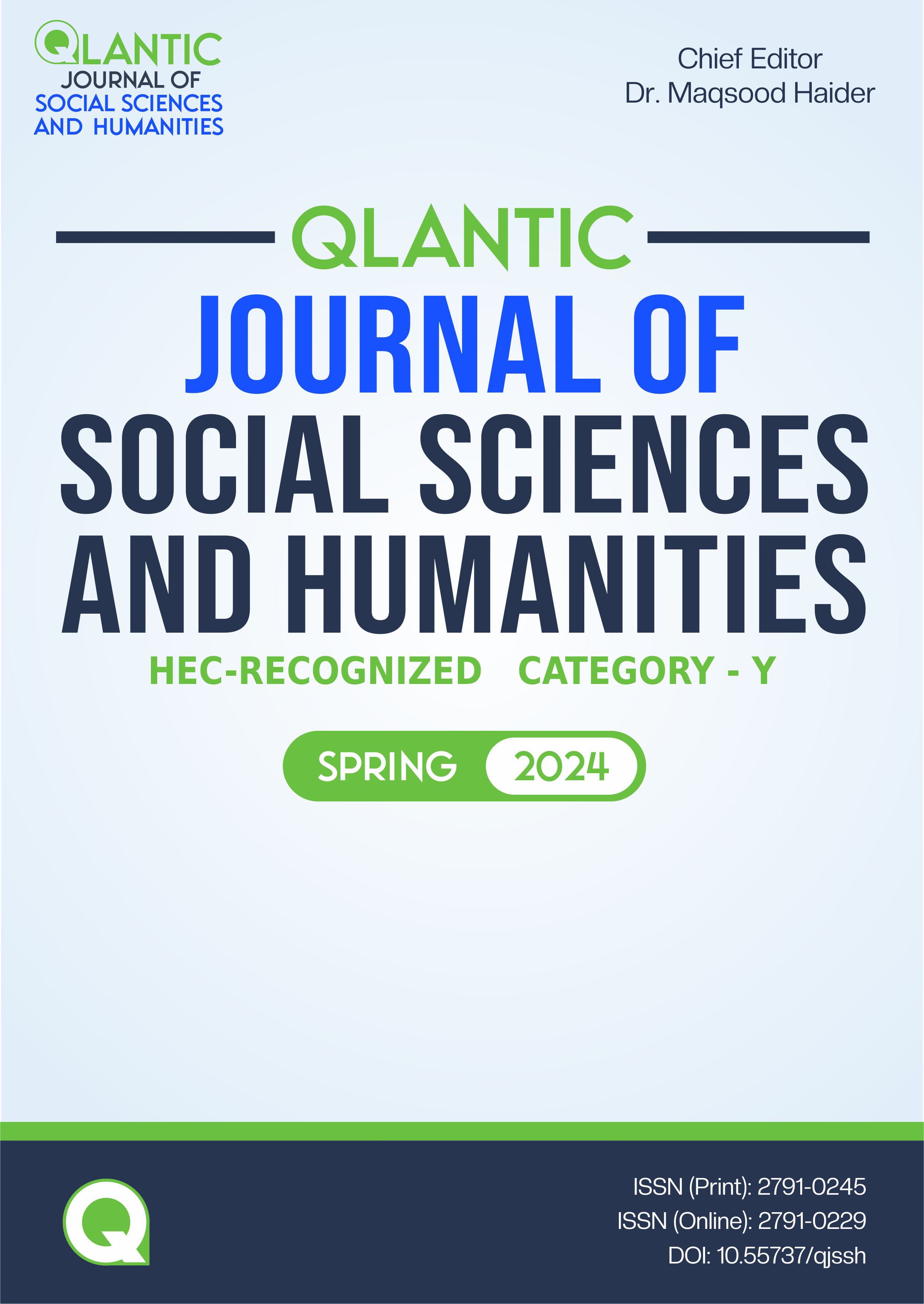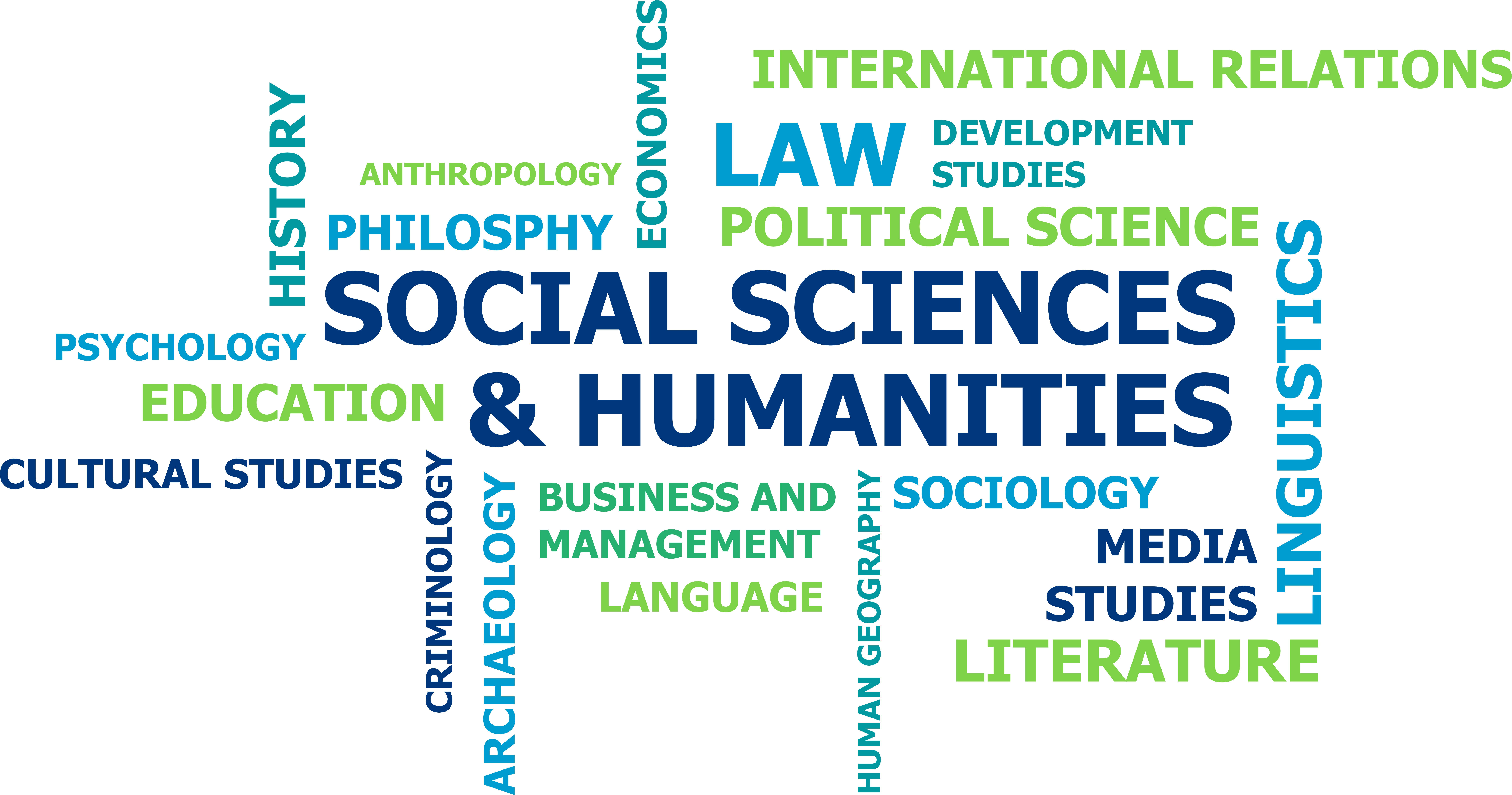Teachers’ Use of Code Switching to Pashto Language in Classroom Discussion: Experiences of non-Pashto Speaking Students in University of Peshawar
DOI:
https://doi.org/10.55737/qjssh.591399401Keywords:
Code Switching, Pashto Language, Learning Barriers, Linguistically Diverse Classrooms, PakistanAbstract
The purpose of the study was to explore the learning experiences of non-Pashto speaking students, which ensued due to teachers’ code switching to Pashto language at University of Peshawar. Employing qualitative methods, the objectives of the study included: exploring perceptions of students about teachers’ use of code switching on non-Pashto speaking students’ learning; analyzing the difficulties students’ face; and exploring strategies that students use to overcome the barriers of language in learning. Population of the study consisted of students of University of Peshawar. Using snowball sampling technique, 25 participants were selected from three faculties of University of Peshawar. The data were collected through semi-structured in-depth interviews and analyzed using thematic analysis technique. Findings of the study reveal that some teachers code switch to Pashto, the local language which creates barriers in learning for the non-Pashto speaking students. This code switching affects students’ academically, behaviorally and emotionally. Consequently, students face an obstructive classroom climate, which severely influences their level of attention and interest and results in their non-participative role in class. The study recommends considering inclusive education principles in linguistically diverse classrooms, so that all the students are treated and benefited equally. Moreover, it suggests that teachers adhere to the National Professional Standards for Teachers in Pakistan (NPSTs) to enhance learning effectiveness.
References
Andrade, M. S. (2006). International students in English-speaking universities: Adjustment factors. Journal of Research in International Education, 5(2), 131-154. https://doi.org/10.1177/1475240906065589
Booth, M. Z., & Gerard, J. M. (2011). Self-esteem and academic achievement: a comparative study of adolescent students in England and the United States. Compare: A Journal of Comparative and International Education, 41(5), 629–648. https://doi.org/10.1080/03057925.2011.566688
Borg, S. (2003). Teacher cognition in language teaching: A review of research on what language teachers think, know, believe, and do. Language Teaching, 36(2), 81-109. https://doi.org/10.1017/S0261444803001903
Braun, V., & Clarke, V. (2006). Using thematic analysis in psychology. Qualitative Research in Psychology, 3(2), 77–101. https://doi.org/10.1191/1478088706qp063oa
Brown, A. (2016). An exploratory study investigating the impact of a university module that aims to challenge students’ perspectives on ageing and older adults. Practitioner Research in Higher Education, 10(2), 25–39. http://files.eric.ed.gov/fulltext/EJ1129960.pdf
Charity, A. H. (2014). We do language : English language variation in the secondary English classroom. Teachers College Press, Teachers College, Columbia University.
Cook, V. (2001). Using the first language in the classroom. Canadian Modern Language Review, 57(3), 402-423. https://doi.org/10.3138/cmlr.57.3.402
Corbett, J. (2001). Teaching approaches which support inclusive education: a connective pedagogy. British Journal of Special Education, 28(2), 55–59. https://doi.org/10.1111/1467-8527.00219
Crawford, M., & Marin, S. V. (2021). Loud and clear: Effective language of instruction policies for learning. A World Bank Policy Approach Paper. World Bank.
Creswell, J. W. (2003). Research Design Qualitative, Quantitative and Mixed Methods Approaches (2nd ed.). Thousand Oaks, CA: SAGE.
Creswell, J.W. (2007). Qualitative inquiry and research design: Choosing among five approaches (2nd ed.). Thousand Oaks, CA: SAGE.
den Brok, P., Brekelmans, M., & Wubbels, T. (2004). Interpersonal Teacher Behaviour and Student Outcomes. School Effectiveness and School Improvement, 15(3-4), 407–442. https://doi.org/10.1080/09243450512331383262
Denzin, N. K., & Lincoln, Y. S. (2005). Introduction: The discipline and practice of qualitative research. In The Sage Handbook of Qualitative Research (2nd ed.). Thousand Oaks, CA: Sage.
Eldin, A. A. T. S. (2014). Sociolinguistic study of code-switching of Arabic language speakers on social networking. International Journal of English Linguistics, 4(6), 78. https://doi.org/10.5539/ijel.v4n6p78
Fontana, A., & Frey, J. (2000). The interview: from structured questions to negotiated text. In N. Denzin and Y. Lincoln (Ed.), Handbook of qualitative research (2nd ed.) (pp.645-672). CA, Thousand Oaks: Sage
Gatwiri, G. (2015). The influence of language difficulties on the wellbeing of international students: An interpretive phenomenological analysis. Inquiries Journal, 7(05), 1-2.
Government of Pakistan. (2009). National Education Policy. Ministry of Education, Pakistan.
Hamre, B. K., & Pianta, R. C. (2001). Early teacher-child relationships and the trajectory of children’s school outcomes through Eighth Grade. Child Development, 72(2), 625–638. https://doi.org/10.1111/1467-8624.00301
Irfan, H., Butt, M., & Rizwan, A. (2022). Undergraduate Students’ Uses of Code Switching (CS) in Pakistani Universities: A Reflective Study. Journal of Development and Social Sciences, 3(2), 426-434. https://doi.org/10.47205/jdss.2022(3-ii)41
Johnson, B., & Christensen, L. (2008). Educational research: Quantitative and mixed approaches (3rd ed.). London: Sage.
Klop, D. (2011). The relationship between narrative skills and reading comprehension: When mainstream learners show signs of specific language impairment (Doctoral dissertation, Stellenbosch: University of Stellenbosch). https://core.ac.uk/download/pdf/37326631.pdf
Kutsyuruba, B., Klinger, D. A., & Hussain, A. (2015). Relationships among school climate, school safety, and student achievement and well-being: a review of the literature. Review of Education, 3(2), 103–135. https://doi.org/10.1002/rev3.3043
Legard, R., Keegan, J., & Ward, K. (2003). In-depth interviews. Qualitative Research Practice: A Guide for Social Science Students and Researchers, 6(1), 138-169. https://socialinquiry.wordpress.com/wp-content/uploads/2014/10/legard-keegan-ward_in-depth-interviews.pdf
Mudassir, I. U., & Norsuhaily, A. (2015). The Influence of School Environment on Academic Performance of Secondary School Students in Kuala Terengganu, Malaysia. Proceedings of ICIC2015 – International Conference on Empowering Islamic Civilization in the 21st Century 6-7 September.
Murtaflah, E. (2017). An analysis of teachers’ code-switching practice in the process of teaching English at SMAN 2 Padang Cermin in the academic year of 2016/2017. (Doctoral dissertation, UIN Raden Intan Lampung).
Nadeem, H. (2018). An Investigation of the Reasons for Code Switching (CS) in English Language Classrooms of BS in the Context of Pakistan. Research Journal of Language and Literature, 3, 20. https://www.rjll.org.pk/uploads/RJLL_2018_v3_-_(FINAL)-5-112-19-36.pdf
Narasuman, S., Wali, A. Z., & Sadry, Z. (2019). The functions of code-switching in EFL classrooms. Social and Management Research Journal (SMRJ), 16(2), 137-152. https://doi.org/10.24191/smrj.v16i2.7068
Nikolopoulou, K. (2022). Online Education in Early Primary Years: Teachers’ Practices and Experiences during the COVID-19 Pandemic. Education Sciences, 12(2), 76–90. https://doi.org/10.3390/educsci12020076
Pitts, M. J. (2009). Identity and the role of expectations, stress, and talk in short-term student sojourner adjustment: An application of the integrative theory of communication and cross-cultural adaptation. International Journal of Intercultural Relations, 33(6), 450–462. https://doi.org/10.1016/j.ijintrel.2009.07.002
Polit, D. F., & Beck, C. T. (2006). The content validity index: Are you sure you know what’s being reported? critique and recommendations. Research in Nursing & Health, 29(5), 489–497. https://doi.org/10.1002/nur.20147
Rahman, T. (2008). Language Policy and Education in Pakistan, Encyclopaedia of Language and Education 2008. Part 1, 383-392.
Rapp, A. C., & Corral-Granados, A. (2021). Understanding inclusive education – a theoretical contribution from system theory and the constructionist perspective. International Journal of Inclusive Education, 28(4), 1–17. https://doi.org/10.1080/13603116.2021.1946725
Reeve, J., & Jang, H. (2006). What teachers say and do to support students’ autonomy during a learning activity. Journal of Educational Psychology, 98(1), 209–218. https://doi.org/10.1037/0022-0663.98.1.209
Rehman, Z., Bashir, I., & Rehman, A. R. (2020). An exploration of teachers’ code switching: The case of English language classroom. Competitive Social Science Research Journal (CSSRJ), 1(2), 54-71. https://cssrjournal.com/index.php/cssrjournal/article/view/19
Sarooj, R. (2020). A qualitative study on the effect of linguistic discrimination on the students of Iqra University. Pakistan Review of Social Sciences (PRSS), 1(1), 59-68. https://journals.pakistanreview.com/index.php/PRSS/article/view/4
Saunders, M., Lewis, P. & Thornhill, A. (2012). Research Methods for Business Students. Pearson Education Ltd., Harlow.
Smith, D. D., & Tyler, N. C. (2011). Effective inclusive education: Equipping education professionals with necessary skills and knowledge. Prospects, 41(3), 323-339. https://doi.org/10.1007/s11125-011-9207-5
Vanegas Rojas, M., Fernández Restrepo, J. J., González Zapata Y. A., Jaramillo Rodríguez, G., Muñoz Cardona L. F., & Ríos Muñoz, C. M. (2016). Linguistic Discrimination in an English Language Teaching Program: Voices of the invisible others. Íkala, Revista de Lenguaje y Cultura, 21(2), 133-151. https://doi.org/10.17533/udea.ikala.v21n02a02
Vural, A. R., & Gomleksiz, M. (2010). Us and Others: A study on Prospective Classroom Teachers' Discriminatory Attitudes. Eurasian Journal of Educational Research, 10 (38), 216-233. https://aniyayincilik.com.tr/main/pdfler/38/13_vural_ruken.pdf





